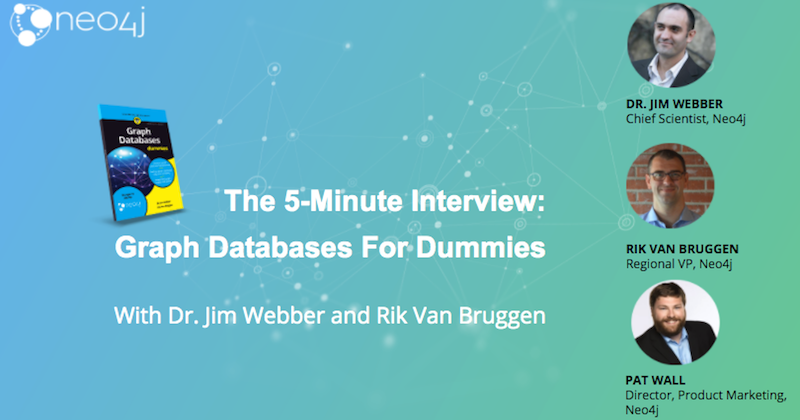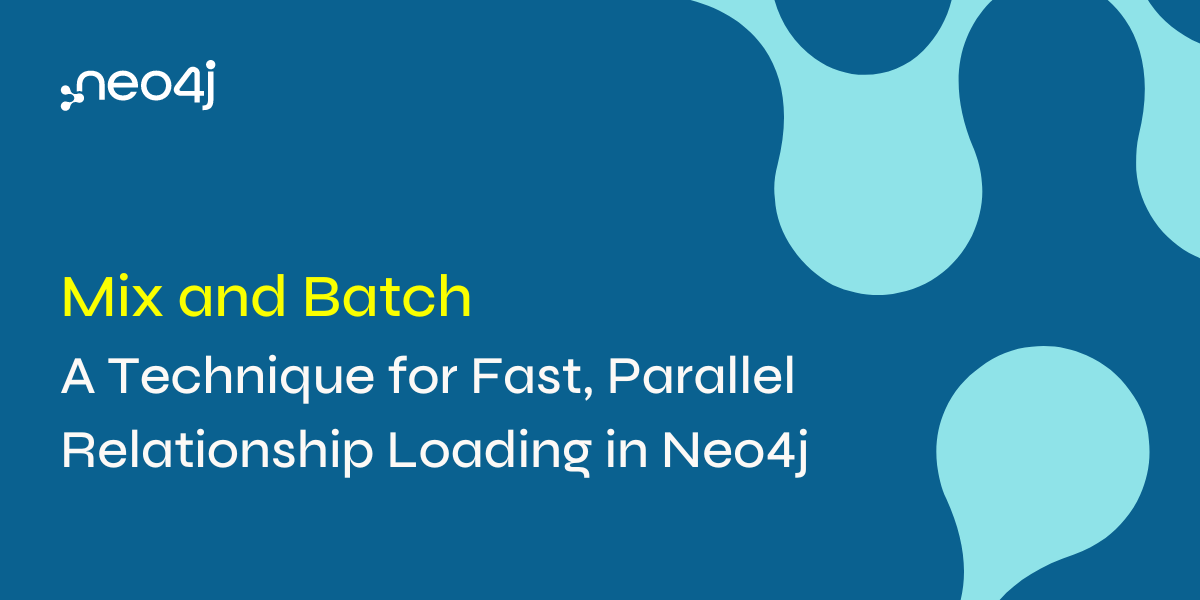5-Minute Interview: Graph Databases For Dummies with Dr. Jim Webber and Rik Van Bruggen

Director of Product Marketing, Neo4j
4 min read

Recently we sat down with the authors of Graph Databases For Dummies, Neo4j Special Edition, Dr. Jim Webber and Rik Van Bruggen. Dr. Webber is Neo4j’s Chief Scientist and Mr. Van Bruggen leads the Neo4j sales team in Europe, and has been doing so for eight years.
This interview takes a high-level look at what’s included in the book and what readers can expect, whether you are new to graphs or would like to educate others in your sphere.
Let’s hear what the authors have to say.
As both of you have already written a book on Neo4j, what made you want to write Graph Databases For Dummies?
Dr. Jim Webber: So for me, it was a redressing, some of the imbalance of content, the overwhelming amount of content we see is targeted at people like me, who really understand graphs. And in fact, I’ve written some of that in the past, but there’s an opportunity to provide content for people who are just dipping their toes into the water.
I think this book is about people who are smart, curious, but new to graphs, and it gives them a practical way of getting going quickly.
Rik Van Bruggen: And from my side, I think I’d like to add, one of the coolest things about graphs, is that we continue to find lots of new audiences, lots of new people to talk to that have a lot to learn about the essential characteristics of new insights coming from graphs. And I think, the more people we talk to, and the more people we can expand that vision to, the better it is for everyone.
Not just from a technology point of view, but also from a business point of view, I think it really helps to talk to more people and explain, and summarize, what we’ve learned over the past couple of years in this wonderful world of graphs.
So Rik, as regional VP of Europe, you talk to thousands, if not hundreds of people who are new to graphs. How does this book help them?
Van Bruggen: Well, from my perspective, I think it’s really about providing a little bit of a guideline, because there is so much content around graphs and graph databases out there already. Just for Neo4j, you can find a graph-related article or blog posts or Medium article on just about any topic on graphs.
But to condense and summarize that, and provide people with a little bit of a guideline, is the goal of this book. That’s really what we’re trying to achieve here. And I know from my personal experience that there’s so much content out there that it’s actually quite useful to get a guideline, such as this book.
And Jim, as a Chief Scientist, you talk to people who are really experienced using graphs. How can this book help them?
Dr. Webber: So there’s nothing in this book graph experts will find that’s new, that’s for sure. But of course, the folks that graph experts work with may be less experts, they may be new technologists that are new to graphs. They may be managerial colleagues who really want to know something about graphs, but are not sure where to start. So I think this book provides a really good stepping stone, if you like, for folks who are new but curious on the way to becoming a graph expert.
It can also help with things like explaining to your boss, why you’re trying to build a system in a particular way. And the fact that it’s quite short – it’s less than 50 pages of material – means your boss can read that in a short amount of time. It’s kind of an evening’s worth of reading, so that even your boss can learn why you’re building certain systems using graphs, and the benefits that you’ll get from them.
Rick, what was your favorite part about writing this book?
Van Bruggen: The favorite part of it is it really forced me, and I think it’s the same thing for Jim, to summarize our learnings. We’re trying to guide people, like I said earlier, and in order to do that, you have to think through how you’re going to bring things down to under 50 pages. It’s not a trivial thing to do, because obviously we’ve learned a lot.
There’s so many things we could talk about, and all of that wonderful stuff, but to condense it and make it something that someone could read it in an evening… That was the favorite part I would say.
After downloading this book, how can someone learn more about graph databases and Neo4j?
Dr. Webber: So I think on the technical side, our community.neo4j.com is a technically oriented community site, which is super friendly. The graph community is wonderfully friendly. Go there, chat with your peers there – they’ll always help you out. If you’re looking for something as a slightly more technical step up from this book, there’s the book that Rik wrote, Learning Neo4j, and there is a book that I wrote, Graph Databases. I think they are really good technical resources.
If you want to take the next step, if you’re more of a domain expert, and you’re looking for how do graphs fit into my vertical, then at neo4j.com we run a whole plethora – at the moment at least, in the zombie pandemic era – of virtual conferences in a variety of verticals such as healthcare, government, logistics, the whole gamut. So have a look at neo4j.com and find a conference that suits you. Joining with your peer group there, you’ll hear lots about what graphs have already been useful and get some ideas about what you might use graphs for in your particular domain.







